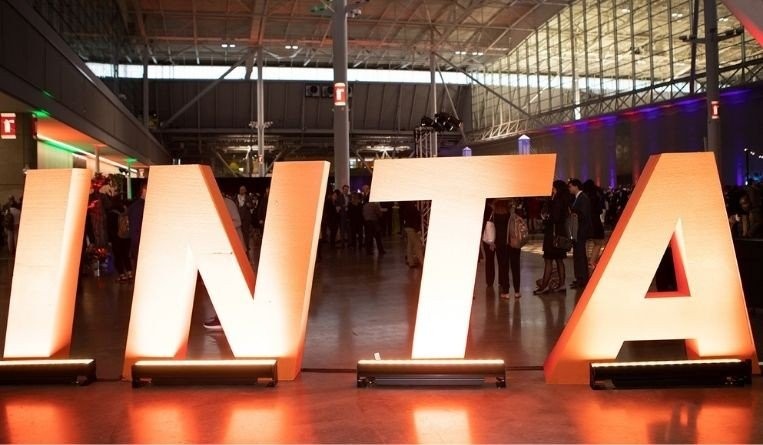INTA 2020 Annual Meeting: Online, on-demand and AI-powered
30 September 2020

Like organizations around the world, Covid-19 has forced the International Trademark Association to take its 2020 Annual Meeting and Leadership Meeting virtual. Espie Angelica A. de Leon sat down with INTA CEO Etienne Sanz de Acedo – virtually, of course – to learn what’s on tap for the November meetings.
This year when a participant enters theInternational Trademark Association’s 2020 Annual Meeting and Leadership Meeting virtual environment, he will be asked to edit his profile via an app.
He will provide his name, affiliation, topics of interest, preferences and other details. Using this information, the app will then match the participant with another participant who is interested in the same topics. It will send a message to the person, telling him that this other participant from this city is available and ask if the person is willing to communicate with him. If the parties agree, the app will help put the two participants in touch, allowing them to exchange emails, have a chat or video conference.
Pre-pandemic INTA Annual Meetings were already providing the opportunity and venue for such meetups between participants from different parts of the world. Only this year, technology ups the ante for such exchanges.
“In the past at the annual meeting, people meet with each other without necessarily knowing each other – just knowing the name and the place where they come from,” explained Etienne Sanz de Acedo, INTA’s chief executive officer. “Here, it’s already providing information about the person you have in front of you so that you can directly go into conversations that might be more relevant.”
This is the AI-powered matchmaking and appointment system at work in this year’s edition of the INTA Annual Meeting and Leadership Meeting.
As with all other conferences and industry events around the world this year, the event is going live online from November 16-20, 2020. Plus, the educational and networking sessions will be available on-demand.
INTA is not using AI as a tool merely to enable two like-minded participants to meet virtually. The association has also put AI in its lineup of topics.
“It’s looking at how AI is impacting IP in a positive way. What does it mean in terms of changes? We are seeing a lot of IP offices from around the world implement AI technology. What does that mean in terms of filing? What does that mean when we’re using intelligent devices?” said Sanz de Acedo. “We’ll definitely look into that from a global perspective.”
AI also forms part of the discussions under the Developing Issues in China track to be held November 18 and conducted in Mandarin.

A New Stage in the Development of China’s Trademark Digitalization: Big Data, AI, and Image Recognition will be the first under the track. Participants will discusss the pivotal role of new technologies, namely AI, big data and image recognition, in managing trademark applications. In 2019, more than 7.8 million trademark applications were filed, an increase of 6.33 percent from those filed in 2017. This development poses a huge challenge to administrative authorities, courts, trademark professionals and applicants.
The track expands into other equally important issues concerning China, namely Identification of Trademark Infringement in Parallel Imports: Chinese Practice and International Experience, New Trends in IPR Enforcement in China, One Year On: China’s New Trademark Law Implementation and Bad-Faith Workshop: From Defenses to Damages.
The talks will also delve more broadly on IP issues in Asia Pacific.
“It’s going to be a major event where all IP professionals from Asia and from China should definitely be participating,” said Sanz de Acedo.
Aside from these, the INTA Annual Meeting also features three workshops on its Women’s LeadershIP Initiative.
A gender gap exists in the trademark practice, said Sanz de Acedo, and this gap needs to be narrowed.
“The gap is probably bigger in the field of patents, but still in the trademark field, there is some kind of gap. That happens, for example, if you look at the level of partners within firms, particularly the equity partners. There are very few females,” explained Sanz de Acedo. “We need to change that. And you know, one organization needs to take the lead on that and we decided that INTA should be that organization.”
The association is mounting these annual meeting workshops as part of a long-term project which included initiatives in Asia, US and Europe in September. Educational events and networking opportunities will also be organized. A scholarship programme may also be in the works under the project. By year-end, INTA will issue best practices and recommendations for corporations and law firms for women empowerment within their organization. The project is not just long-term; it is also a priority for INTA.
“Those workshops, by the way, are not limited to women,” said Sanz de Acedo. “They are open to women and men because if we want to close that gap, men have a role to play as well and it’s important to discuss that and to openly find solutions to really allow women to occupy the position they should be occupying in every company.”
Another topic on the agenda is how the pandemic has changed the IP world and what should IP professionals do about this.
“We cannot travel, we have to do business in different ways, most of us have to work from home. These have a huge impact on individuals and organizations,” said Sanz de Acedo, “and they have, as well, an impact on IP.”
He added that, initially, filings in major IP offices around the world had dropped by about 15 to 25 percent. Now things are getting better with the filings increasing again. While this is good news, a lot of issues in connection with the pandemic still need to be discussed. Among these are skills management, brand resilience, brand perception, impact on corporation-customer interaction and others.
“Over the last 20 years, we’ve had let’s say, three or four major crises. Some of them were more financial crises. This has been a health and safety crisis. But there are some common elements through all these crises that we need to think about and talk about so that when the next crisis comes, we’ll be better prepared,” said Sanz de Acedo.
The future of IP, branding in the age of social media, earning a seat at the C-suite table, legal and corporate communication, licensing, financial issues, patents, copyright and more will also be taken up.
There will be challenges for sure, said Sanz de Acedo, this being the first virtual INTA Annual Meeting. But INTA leaders accept the fact that technology is here to stay. Hence, they are working hard in order to deal with these challenges.
So far, preparations are going well. Early bird registered had just closed, said Sanz de Acedo during an interview in early September. The number of registrants had already hit more than 2,000, surpassing expectations.
As of mid-August, nearly one in four registrations were corporate brand owners. This signifies a 12.7 percent increase in corporate attendance compared to the 2019 annual meeting where one of 10 registrants were corporates.
Additionally, 13.8 percent of organizations which have registered has signed up more people this year than they did last year.
The number will continue to increase, Sanz de Acedo believes, “the moment our members will realize that it’s going to be possible to do business, attend sessions, do networking and more importantly, for the first time, do business development, go to meetings to network and still be able to digest full educational sessions at your leisure whenever you want.”
“This is going to be available on-demand,” he said. ”That’s a very nice benefit.”
In total, the event will feature 356 sessions across the table topic activities, corporate meetups, speed and social networking sessions, etc. This translates to about 14,200 seats.
Though he acknowledged that nothing can replace in-person meetings, Sanz de Acedo said INTA intends to somewhat continue using the virtual space for its future meetings even in the post-pandemic period.
What he envisions is to have some virtual offerings available where about 80 percent of participants will be physically attending. Meanwhile, the rest will be participating remotely. The choice for remote attendance may be due to budget restrictions, inability to travel and others.
“All this pandemic has provided us is an opportunity to rethink the future,” he said.
At the rate things are going for INTA, that future remains bright. With technology and the online space serving as indelible, workable options, the INTA Annual Meetings and Leadership Meetings seem poised to reach even more audiences worldwide.






